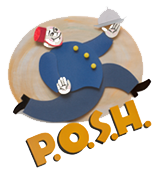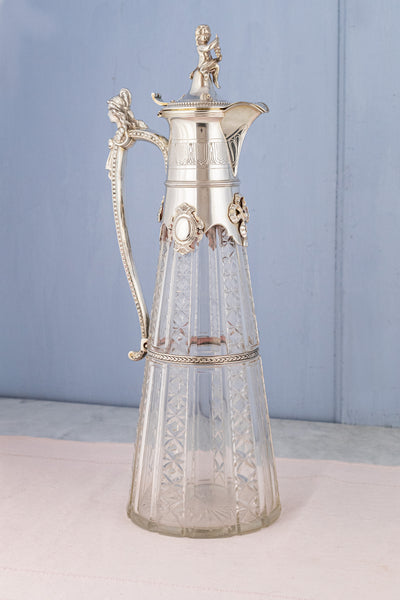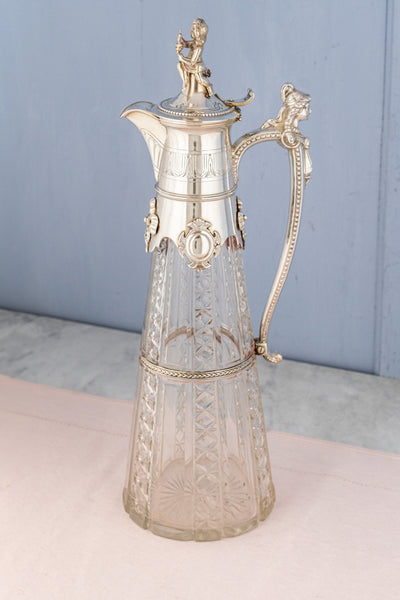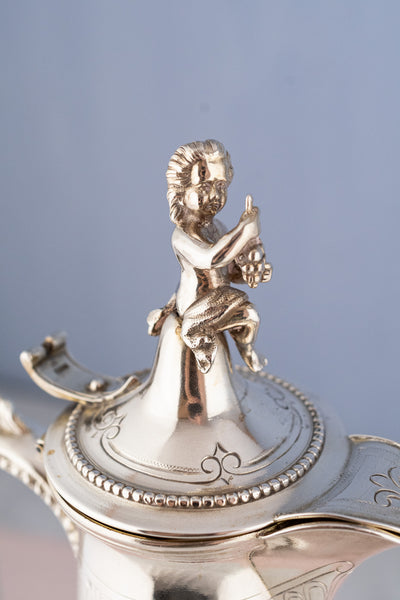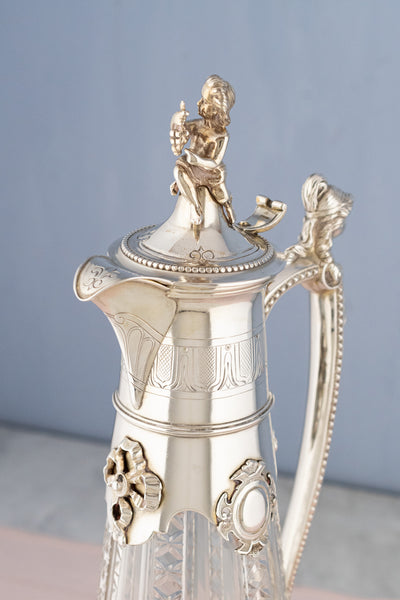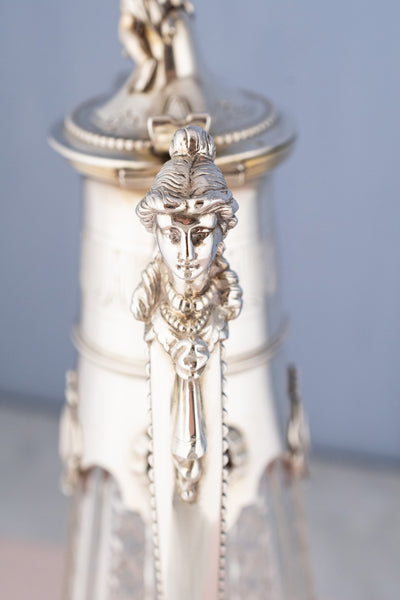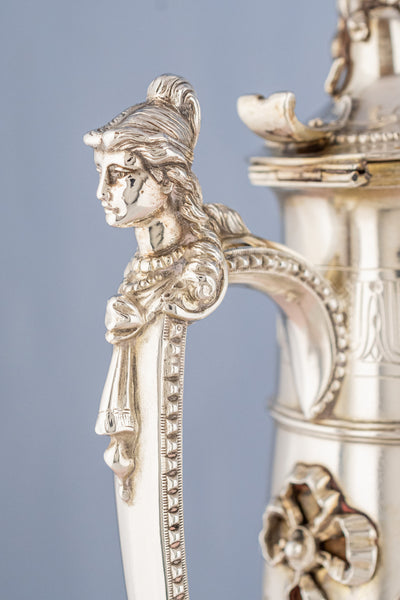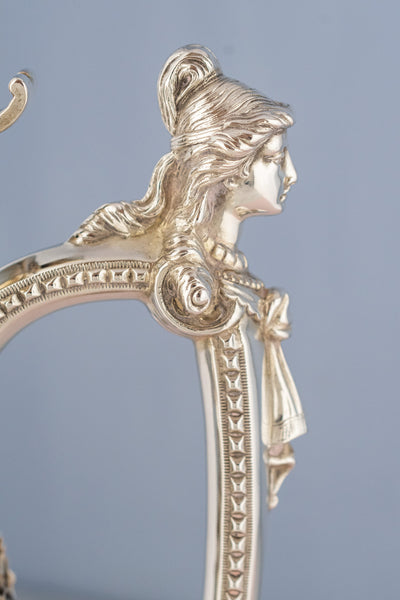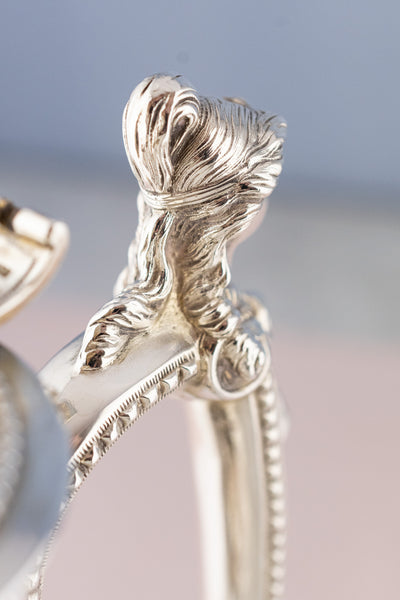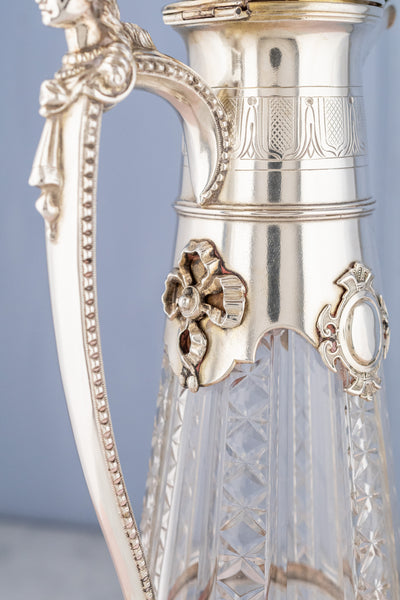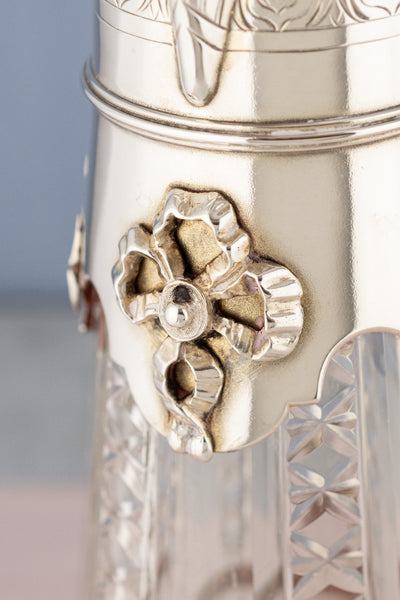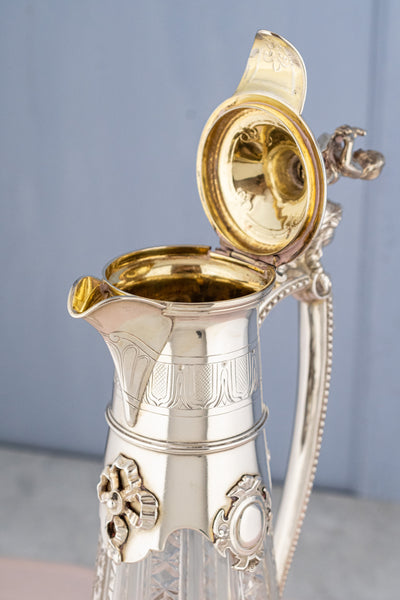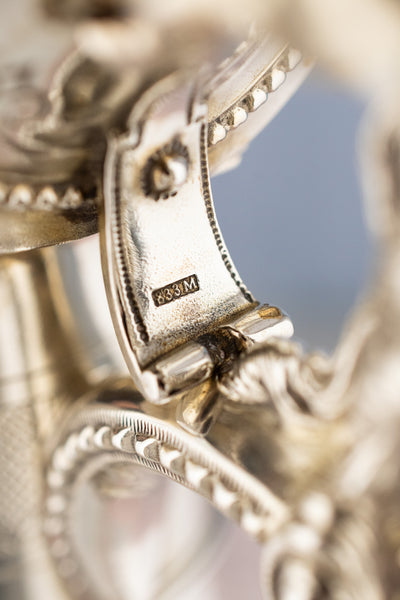Victorian Silverplate & Engraved Crystal Wine Pitcher
Victorian Silverplate & Engraved Crystal Wine Pitcher
$650.00
Sparkling at every turn with brilliantly hand-engraved crystal and gleaming silverplate, we are inspired to distraction by this magnificent Victorian Silverplate & Engraved Crystal Wine Pitcher. Gracefully imagined and magnificent in nature, this exquisite vessel was found at a recent silver market in the north of England.
The upper portion of the pitcher gleams in antique silverplate, embellished with artful engraving in a lively geometric pattern. Raised beading encircles the diminutive lid, adding an additional element of sophistication that sweetly frames the exquisite grape-wielding cherub finial. With a regal silhouette fit for the most formal of occasions, this impressive pitcher is made even more glamorous by the additional finial crowning its glamorously articulated handle. Reminiscent of a carved figure upon a ship's bow, the bejeweled maiden with her lavish locks adds a feminine, romantic touch to this stately serving piece.
A beautiful example of serveware designed to captivate distinguished guests, this luxurious pitcher features the talented handwork of multiple artisans, sparing no detail with their expert craftsmanship. Embellished with brilliantly engraved, lively sunburst stars vertically arranged in a flowing pattern that rises towards the impressive neck, the motif is further enhanced by a profusion of rays emanating from the base of the clear crystal jug. Designed for maximum allure while dining by candlelight, the addition of wine or other liquid to the jug creates a stunning effect in which the engraved cuts within the glass glimmer and dance in the flickering light.
During the Georgian and Victorian eras these elegant pitchers (often called Wine Ewers or Claret Jugs) were very popular in wealthy households, as wine was delivered to the home in large wooden barrels. The kitchen staff would decant the wine from the barrel into a decorative pitcher for presentation on the dinner table. As the formalities of dining began to relax in the 20th century and bringing wine to the table in its bottle became acceptable, the use of these pitchers slowly declined.
With an impressive stature of shining crystal and magnificent silverplate, it captivates with every detail. Equally at home for serving water as for decanting your most prized red, it will surely make a swoon-worthy gift or memorable addition to any well-dressed table.
Strictly one-of-a-kind and subject to prior sale. Circa 1900. In excellent antique condition. 15"H x 6"W (including handle).
Learn More About Wine Pitchers
For most of the 18th century, wines were either served out of solid silver pitchers, or from glass decanters and bottles. Most wealthy households purchased wines in casks which were stored in the cellar, from which the head butler would decant into the appropriate serving vessel prior to the meal.
It was not until the early 19th century when glass manufacturing developed sufficiently that wines were bottled at the source in uniform bottles. This probably explains the sudden appearance of silver mounted claret jugs from about 1830 onwards. As the use and storage of wine became easier, and as the industrial revolution produced a larger consumer class yearning for finer living and drinking, so the demand and consumption of wine grew and with it the need for new conventions, customs and accessories.
To that end, the wine pitcher or claret jug was introduced throughout Europe in the early 19th century when silversmiths embellished glass decanters with silver mounts, lids and handles.
The design and style of these pitchers evolved over time, driven by the ever-changing whims of fashion. From highly ornate to whimsically designed in the shapes of animals, wine pitchers or claret jugs reflected the desires of a society to display their new-found wealth and taste for the finer things of life.
Learn More About Claret
Before “claret” was the nickname for Bordeaux wines, it meant “clear,” “pale” or “light-colored” wine (“claret” being derived from the Latin word for “clear”). This is back in the 14th and 15th centuries, when wines from Bordeaux were actually paler, almost like rosés. In the late Middle Ages, “claret” also referred to a heated wine poured over a bag of spices.
The first known references to “claret” as dark red Bordeaux wines were in the 1700s by the British trade. History buffs will recall that France and England were at war during this period, and it was right around then that the English started seeking out Portuguese wines to satisfy their thirst.
These days “claret” is used as a generic way to refer to Bordeaux wines - or wines styled after Bordeaux.
